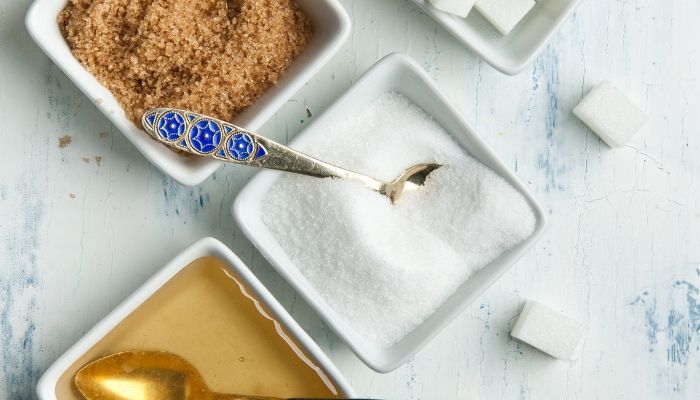AUGUST 10, 2017 by OLIVIA NEELY, RDN, LD
Before going on a low-carb diet, it’s important consider your own bio-individuality and personal nutritional needs. Here are some tips for finding balance and eating sugar the right way.
If you’re confused about diet and nutrition, believe me you’re not alone.
I’ve worked with hundreds of people who are trying to figure this out and it can be frustrating. Many people begin dietary changes and feel great at the start, whether they’re going on a 30-day Paleo Reset, a gut-healing protocol like SCD or GAPS, or reigning in their sugar with a candida diet. However, many times these are just the starting points of our nutrition journey together.
Two people can feel monumentally different from each other two weeks into the same diet. Why? Because no one has the same nutritional needs! It’s all about bio-individuality and diversity.
Say you start a low-carb Paleo diet with your best friend and two weeks in she’s glowing! Literally glowing. Her skin is better, she dropped 2 pounds, she has abundant energy and tells everyone she meets that she has found the fountain of youth. You, on the other hand, feel like a rock. You are so fatigued that you can barely make dinner for your family before crawling into bed. You’re dizzy, irritable and have gained 2 pounds. What gives??
If you can relate to this example, I know you don’t want to hear it, but this gives me a lot of information about your bio-individuality and your personal nutritional needs.
Five things to consider when going on a low-carb diet:
- Without healthy carbs, your adrenals can’t prevent dizziness upon standing.
- Very low-carb diets can be problematic for women’s hormones.
- Nutrients, including carbohydrates, are essential for muscle repair and growth, especially during times of illness or stress.
- Reaching your health goals isn’t a matter of eliminating all sugar; it’s a matter of addressing root problems like leaky gut and a slow metabolism.
- Swinging the complete other way and eating ALL of the carbs (even grain-free) is not the answer.
- This is just a start – many times we don’t find the sweet spot for our individual diet right off the bat… use this opportunity to listen to your body and adjust. This is often not a quick fix.
Use biofeedback to determine carb intake. By observing your body’s symptoms, regular bloodwork, using a glucometer and functional medicine, you can find your carb homeostasis. It’s all about finding out if you’re eating too many carbs or too little.
What are some symptoms that indicate you may be eating too many carbs?
- Using concentrated sweeteners (honey, maple syrup, etc.) on a daily basis
- High fasting blood sugar in the morning (a glucometer reads over 100)
- Craving something sweet or starchy with each meal
- Feeling tired after meals
- Not feeling hungry in the morning
- Slow wound healing and tissue regeneration (indicates insulin resistance)
What are some symptoms that indicate you may be eating not enough carbs?
- Constipation
- Feeling dizzy or lightheaded upon standing quickly
- Feeling chronically chilled
- Having very cold fingers and toes
- Too much weight loss
The above symptoms can point to other health concerns, but balancing carbs is an essential place to start. Implement these strategies today to learn how to eat sugar again:
How to Eat Sugar
Use unrefined sweeteners. Sounds simple, but did you know options marketed as “natural” are actually highly refined? For example, agave syrup. Choose sweeteners that have stood the test of time: fresh fruit, raw honey, maple syrup, jaggery, and coconut sugar.
Avoid artificial sweeteners and sugar alcohols. Calorie-free sweeteners, including artificial sweeteners, confuse the body. Furthermore, artificial sweeteners like aspartame are potentially carcinogenic. Sugar alcohols, while not shown to be harmful, are notorious for causing digestive distress like gas and bloating.
Choose fresh fruits over fruit juice and dried fruits. Fresh fruit is a living food, containing a synergistic combination of enzymes, vitamins, soluble fiber and minerals. Fruit juice and dried fruit is concentrated sugar and doesn’t provide the satiating properties of whole fruits. For example, you can easily gulp a glass of apple juice in five minutes, but it contains the sugar equivalent of five apples!
Balance carbohydrate intake with fat and protein. Quality fats slow the absorption of glucose into the blood stream, providing satiation and satisfaction. Protein helps pull sugar into the cells so your body can use it for energy. So enjoy your baked sweet potato with a dollop of ghee and a portion of meat!
Use a glucometer to tweak your carb intake. Symptoms such as cravings, irritability, lethargy, and hyperactivity give insight into our blood sugar. I suggest taking your fasting glucose (upon waking, before breakfast) at least a few times per week. For information on the best glucometer and optimal glucose numbers, I use Chris Kresser’s article here and highly recommend it.
Make peace with carbs. Sugar is an emotional trigger for many. Remember, stress turns digestion off. We need to be in the relaxed parasympathetic mode to produce stomach acid and digestive enzymes. If we are stressed about carbs, we can’t digest the carbs.






